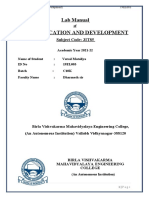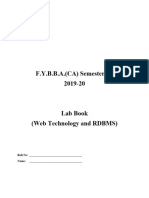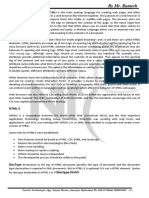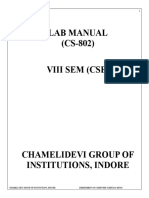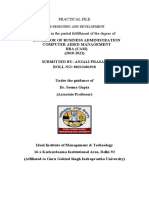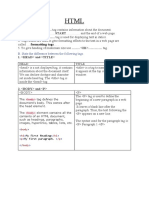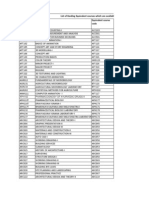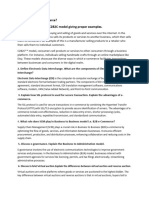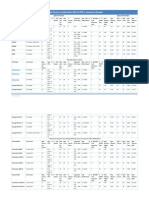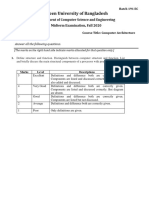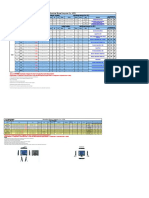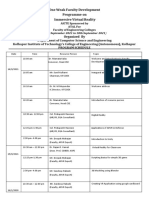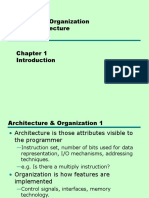0% found this document useful (0 votes)
29 views10 pagesA222 Lavanya Exp 1
The document is a lab manual for a web programming course, focusing on the study of basic HTML tags and the creation of a homepage. Students are expected to learn to design HTML pages, format text and images, create tables and lists, and design interactive pages using frames. The manual includes instructions for creating a CV, registration page, and contact page, emphasizing the importance of proper HTML structure and tag usage without CSS.
Uploaded by
lavanya.hexamideCopyright
© © All Rights Reserved
We take content rights seriously. If you suspect this is your content, claim it here.
Available Formats
Download as PDF, TXT or read online on Scribd
0% found this document useful (0 votes)
29 views10 pagesA222 Lavanya Exp 1
The document is a lab manual for a web programming course, focusing on the study of basic HTML tags and the creation of a homepage. Students are expected to learn to design HTML pages, format text and images, create tables and lists, and design interactive pages using frames. The manual includes instructions for creating a CV, registration page, and contact page, emphasizing the importance of proper HTML structure and tag usage without CSS.
Uploaded by
lavanya.hexamideCopyright
© © All Rights Reserved
We take content rights seriously. If you suspect this is your content, claim it here.
Available Formats
Download as PDF, TXT or read online on Scribd
/ 10







